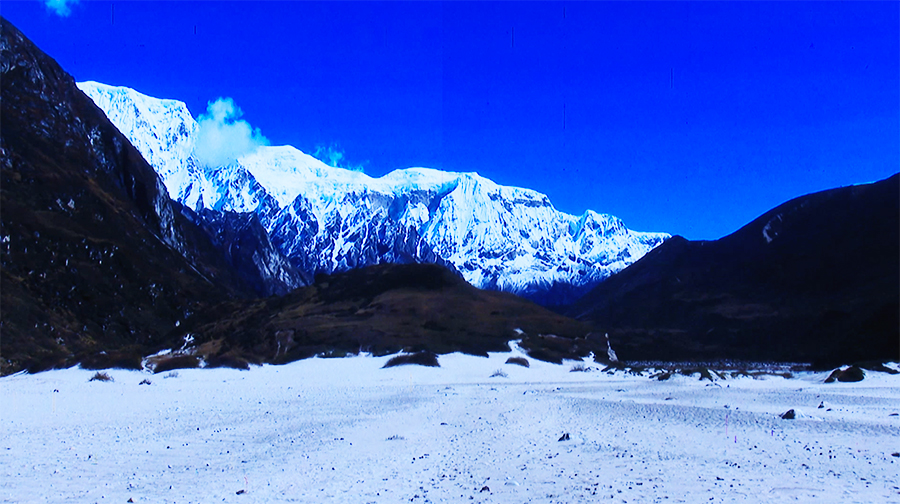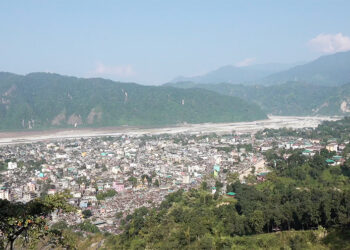 Bhutan is home to nearly 570 glacial lakes. Of them, 17 are at risk of glacial lake outburst flood due to rising temperatures. To mitigate the risk, early warning systems are crucial in monitoring glacial changes and preventing disasters. However, the installation of early warning systems remains a challenge. Marking the urgency of this issue, Bhutan joined the world in observing the first-ever World Day for Glaciers alongside World Meteorological Day in the capital today.
Bhutan is home to nearly 570 glacial lakes. Of them, 17 are at risk of glacial lake outburst flood due to rising temperatures. To mitigate the risk, early warning systems are crucial in monitoring glacial changes and preventing disasters. However, the installation of early warning systems remains a challenge. Marking the urgency of this issue, Bhutan joined the world in observing the first-ever World Day for Glaciers alongside World Meteorological Day in the capital today.
Glaciers are large, slow-moving masses of ice that form over centuries from accumulated snowfall and act as important freshwater reservoirs. They provide water for millions of people, regulate sea levels, and support biodiversity.
According to the World Glacier Monitoring Service, glaciers are now 9,000 billion tonnes lighter than when records began in 1975. There are about 275 thousand glaciers globally.
The United Nations declared 21st March as World Day of Glaciers and this year as the International Year of Glaciers’ Preservation for the vital role glaciers play in sustaining life on Earth for generations to come.
Experts have warned that glaciers are melting at an unprecedented rate. This calls for adequate early warning systems to detect risks and alert people about natural disasters such as glacial lake outburst floods.
The National Centre for Hydrology and Meteorology, NCHM’s, Science Seminar, focused on the importance of early warning systems as the world observed this year’s Meteorological Day under the theme ‘Closing the Early Warning Gaps Together.’
“From collecting data and information at the upper reaches of the river down to the vulnerable communities, relaying the information of disaster to the vulnerable communities downstream. That is why early warning for countries like Bhutan especially which are mountainous, is important. Our country is 98 per cent covered by mountains and then all the developmental activities, all the communities are settled along the major river basins,” said Karma Toeb, Specialist, National Centre for Hydrology and Meteorology.
However, he added, installation of early warning systems comes with its fair share of challenges. According to the World Meteorological Organisation, only half of all countries worldwide have adequate early warning systems.
“Well now, by the geographical location and physiographic condition of our country, it poses a lot of challenges. First of all, to install an early warning system in the river basins, accessibility is the main issue. Equipment is one component which is also very expensive. Another part is the communication system. We cannot rely on the normal GPRS system.”
Currently, the country has three early warning systems installed along Punatsangchhu, Chamkharchhu, and Mangdechhu to monitor glacial hazards and provide timely alerts to vulnerable communities.
“It is not sufficient. Because there are a lot of other river basins which are not covered by the present early warning systems that are installed in three sub-basins. So, we need to expand these systems to other river basins which are devoid of early warning systems,” said Karma Toeb, Specialist, National Centre for Hydrology and Meteorology.
According to a new report by the World Meteorological Organisation and the World Glacier Monitoring Service, glaciers suffered the largest three-year mass loss ever, raising concerns about water shortages, rising sea levels and increasing natural disasters between 2022 and 2024.
It is more crucial than ever for people to act now to mitigate the effects of climate change, protect these vital ice formations for future generations, and prevent natural disasters related to their loss.
Kinzang Lhadon
Edited by Phub Gyem








